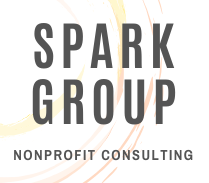Pride & Pronouns
What better way to celebrate Pride month than to take inventory of your organization and ask – are we doing everything we can to ensure inclusivity towards members of the LGBTQIA+ community?
A good first step to take (or second step, or third step…) is to consider your organization’s use of pronouns.
A quick refresher on pronouns
If you think back to high school grammar, a pronoun, by definition, is ‘any small set of words (such as I, she, he, you, it, we, or they) in a language that are used as substitutes for nouns or noun phrases and whose referents are named or understood in the context.’ (Mariam-Webster)
Pronouns are an essential part of everyday communication. We use pronouns to identify or refer to an individual person, just as we use an individual person’s name.
In English*, specific commonly-used pronouns have a gender implied -- “he” refers to a man/boy; “she” refers to a woman/girl. Generally speaking, people make assumptions about which pronoun to use (and therefore the gender of another person) based on that person’s appearance or name. However, these assumptions are not always accurate or helpful.
The act of making an assumption (even a correct assumption) sends a potentially harmful message -- that people have to look a certain way to demonstrate the gender that they are or are not.
If we found out we were using someone’s name incorrectly (calling someone by the wrong name, or mispronouncing a name), of course most of us would want to be corrected.
The misuse of a pronoun shouldn’t be any different.
As the author Shige Sakurai points out, “Using someone’s correct personal pronouns is a way to respect them and create an inclusive environment, just as using a person’s name can be a way to respect them.” (www.mypronouns.org)
Taking steps toward inclusivity
Rather than rely on potentially harmful assumptions about persons we meet with, work with, and interact with – personally and professionally – here are some steps to consider:
At organizational events, encourage participants to share pronouns during introductions within group activities and meetings. If and when you use nametags, provide a space for individuals to share their pronouns … and make sure you share your own! This helps to normalize the idea that people shouldn’t make assumptions about a person’s gender or pronouns based on appearance or the traditional gendering of a name.
Include your pronouns in your email signature. By doing so, you are again helping to disrupt the culture of making assumptions, and creating a more inclusive environment that doesn’t single out persons who may be non-binary, genderqueer, or trans as the only folks who share or include pronouns in their various communications.
Make an effort to remove unnecessarily gendered language from your greetings and other communications. Instead of saying “ladies” or “guys” to a group of people, try substituting words such as “folks,” “y’all,” “friends”… the possibilities go on and on!
Remember that mistakes happen. When you misgender someone, simply apologize – and fix your language moving forward. Says author Sassafras Lowery, “Don’t make a huge deal about your mistake and force the trans/non-binary/genderqueer person spend a lot of time and energy consoling you for misgendering them. The best apology is not doing it again.”
⭐ Join our weekly newsletter where we share tons of exclusive tips, tools, grant opportunities, and resources to our subscribers. Subscribe on the Spark Group home page.
*Check out this news story from the Washington Post, written in 2019, about different ways gender-neutral language has been developing in various parts of the globe, in languages other than English:
References and Further Resources:
Lowrey, Sassafras. “A Guide To Non-binary Pronouns And Why They Matter” 11/8/2017.
Sakurai, Shige. Mypronouns.org. 1/22/2017 https://www.mypronouns.org/




